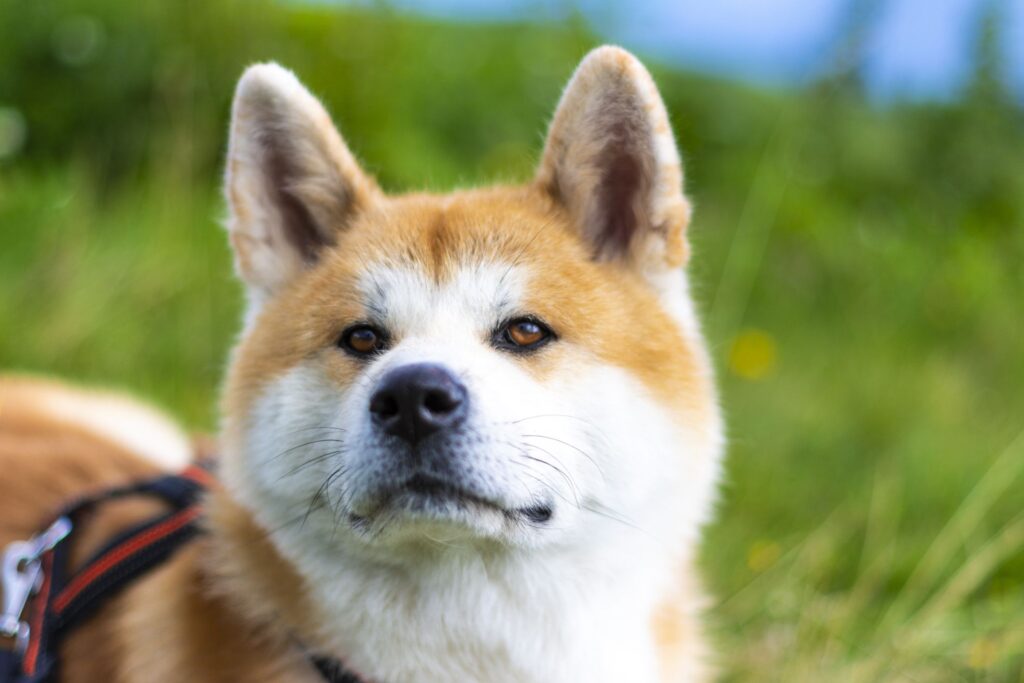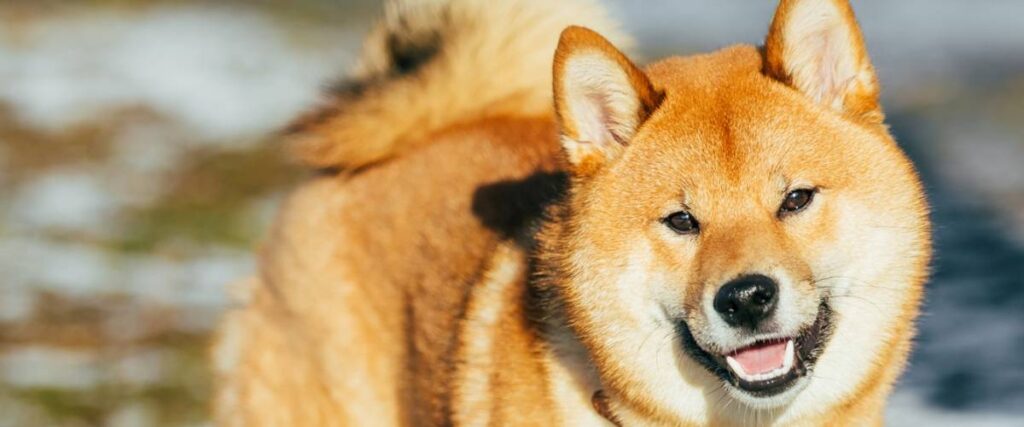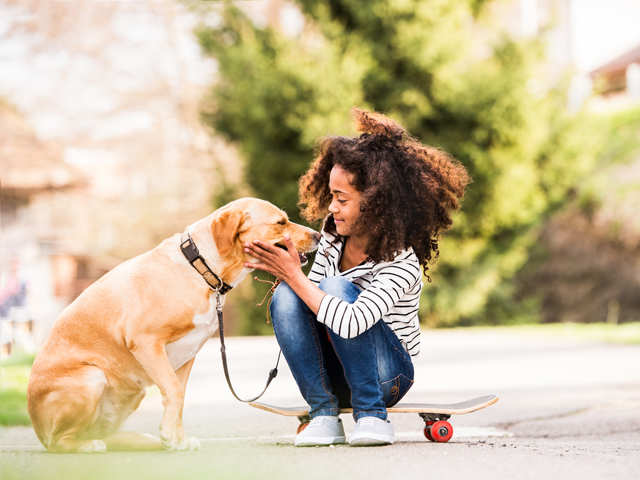Throughout history, animals have played a key role in human life. People have come to depend on animals for food, clothing, and transportation. At many times throughout history, and in many cultures around the world, animals were also the focus of religious worship.
Although animals still maintain many of those traditional uses all over the world, the role of animals in society has also changed. In the last several hundred years, there has been a massive increase in the number of animals kept purely for companionship and pleasure.
Here’s some fascinating information on the evolution of pet ownership.
Prehistoric communities
In prehistoric times, the relationship between primitive man and animals was that of hunter and prey. People viewed animals primarily as a source of food and skins for clothing.
The first animal to make the transition from the wild to the domesticated state was the wolf, the common ancestor of all modern-day dogs. This occurred at least 12,000-14,000 years ago when people discovered that young wolf cubs that remained subordinate to humans as adults could be trained.
From the earliest days of domestication, dogs would have had practical uses. The dead person’s hand had been arranged so that it rested on the animal’s shoulder, as if to emphasize a deep bond of affection during life. Although domesticated dogs were probably treated with respect in primitive societies, there is evidence that at least some were also considered companions as early as 12,000 years ago. The finding of a Paleolithic tomb in Northern Israel, in which a human was buried with a dog or wolf puppy, illustrates this point. They were kept because they could perform tasks such as hunting, guarding, and herding.
Ancient civilizations
A gradual change in human living from nomadic hunter to settled farmer began approximately 8,000 years ago in the so-called Fertile Crescent of the Middle East. Working dogs would have been increasingly valued in this setting, but at about this time the cat also became loosely associated with humans. Houses, barns, and grain stores provided a new environmental niche that was rapidly exploited by mice and other small mammals, the favored prey of small wild felids. Cats that followed these rodents into human settlements would have been tolerated-and possibly encouraged-because of their usefulness in getting rid of these troublesome pests.
In some ancient civilizations, dogs may also have had cultural significance, usually in regard to death practices. In some cases, the deceased were deliberately put out for dogs to consume, as it was thought necessary for the dead person’s soul to pass through a dog to reach the afterlife. These early associations between dogs and death gradually evolved into beliefs that dogs could ward off or prevent death. In ancient Greece, dogs were kept as co-therapists in healing temples for their perceived ability to cure illness. This could be seen as the precursor of our modern practice of using therapy canines to help people with a wide range of conditions.
Pet ownership by the ruling or noble classes has a long history, dating back at least as far as ancient Egyptian times. Murals from this era depict pharaohs keeping companion animals. Many generations of Chinese emperors kept dogs that, as puppies, were often suckled by human wet nurses, and as adults had been tended to by their own servants. Greek and Roman nobility were also avid pet keepers.
As civilizations developed, human-animal relationships became more symbolic and less central to human life, and with this change came the view that humans had dominion over all animals. Although animals lost much of their religious and cultural importance, some animals remained closely associated with humans, but subtly, in the role of companions.
The Middle Ages
In medieval Europe, from the 13th-15th centuries AD, pet keeping was popular among the aristocracy and some senior clergy. Lap dogs were fashionable among the noble ladies, whereas male nobility were more inclined to lavish their attention on more “useful” animals, such as hunting hounds and falcons. During this period, hunting, or “venery,” was of great importance to the aristocracy as a symbol of power and status. Dog breeds spread throughout Europe as different types of hound were developed for chasing different quarry.
Nevertheless, the Christian church frowned on pet keeping. Church leaders suggested that the food used for these animals should be given to the poor. However, the Church was probably more afraid that close associations with pets were strongly linked to pagan worship. The prejudice against pets reached its height during the Inquisition, where evidence against heretics often included references to close associations with animals.
Throughout the barbaric witch trials of the 16th and 17th centuries, a large number of innocent people were accused of witchcraft and condemned to death. Possession of an “animal familiar,” considered to be symbolic of Satan, was used as evidence of their guilt. The accused were most often elderly and socially isolated women who probably kept animals for companionship. As interest in witchcraft declined, however, companion animals returned to favor and even came to symbolize good fortune.
The most likely reason for negative attitudes to companion animals throughout history is that affectionate relationships towards animals were considered immoral and against the natural order of life. Until relatively recently, there was a commonly held view in the Western world that animals lacked feelings and were created in order to serve humanity.
The rise of pet keeping
Pet keeping wasn’t generally accepted in Europe until the end of the 17th century, and it wasn’t common among the middle classes until the late 18th century. Pet keeping in its present form is probably a 19th century Victorian invention. At thwill be time, it was perceived as a link with the natural world, which itself had been no longer seen as threatening. It also allowed a visible demonstration of man’s domination over nature.
Britain had been a center for dog breeding since Roman times, and one of the first formal competitive dog shows was held in Newcastle in 1859 for the Pointer and Setter breeds. Still, little was known about the inheritance of various characteristics until Charles Darwin published The Origin of the Species in 1859. Since that time, dog breeding has become more formalized with the establishment of strict breed standards.
The practice of pet keeping in Victorian times also reflected other social attitudes of the time. Pet keeping was not considered appropriate for the “lower classes,” as it had been thought to encourage the neglect of additional social duties.
Pet keeping in modern society
In present-day societies, dogs have a number of functional roles, from ornamental to status symbol, as helpers, and as companions. Dogs can also act as a channel for personal expression because people express their privateity in the breed they own. Guide dogs for blind people and hearing dogs for deaf people are examples of pets who are kept as helpers. For example, rare breeds are often used as indicators of status.
But the most common reason for owning pets in Western societies is companionship. In recent years, there’s been a growing awareness of the very positive effects this relationship can have on human health and psychological well-being, and a recognition of the therapeutic value of companion animals.




